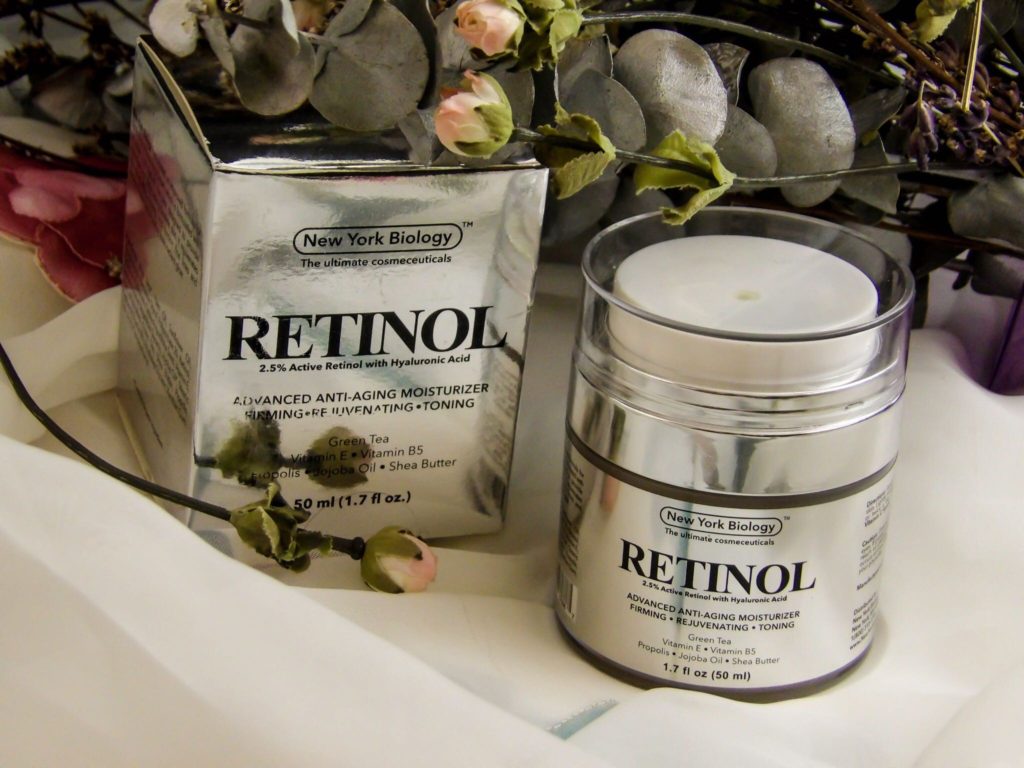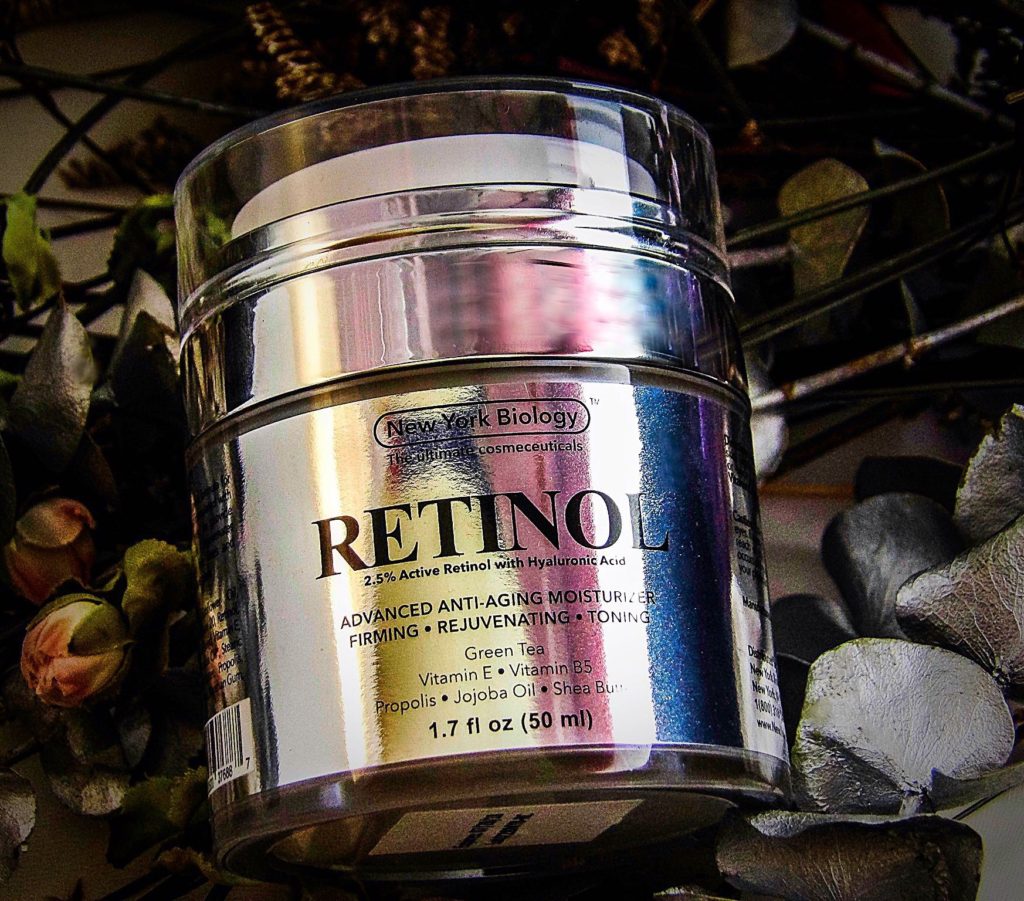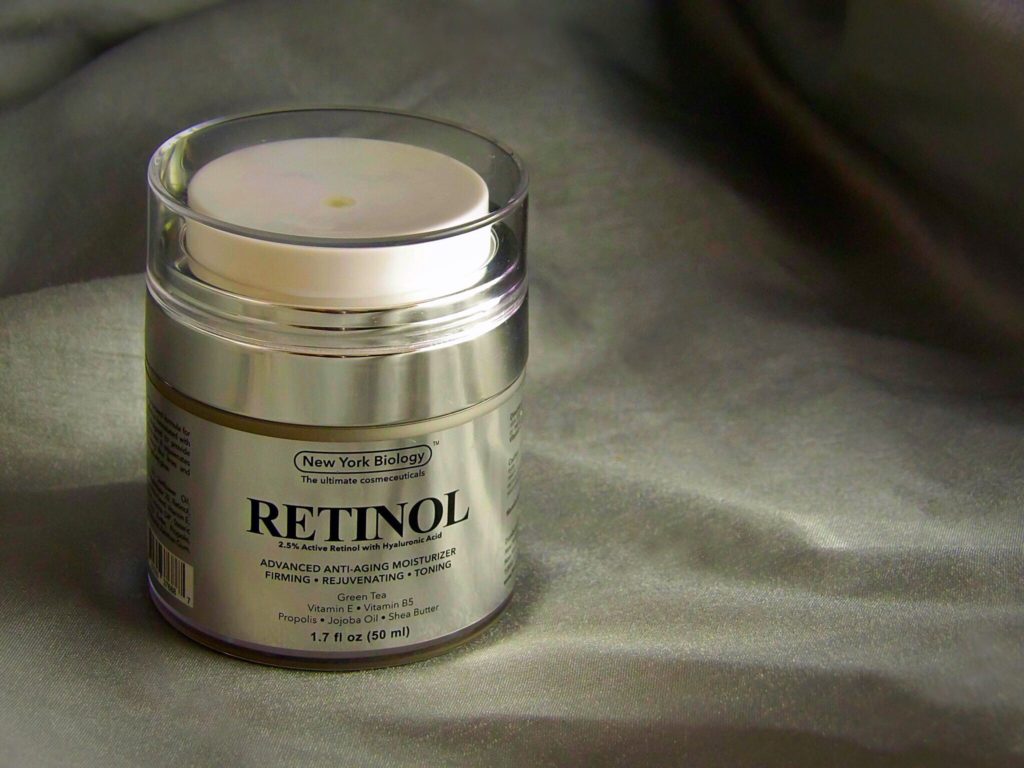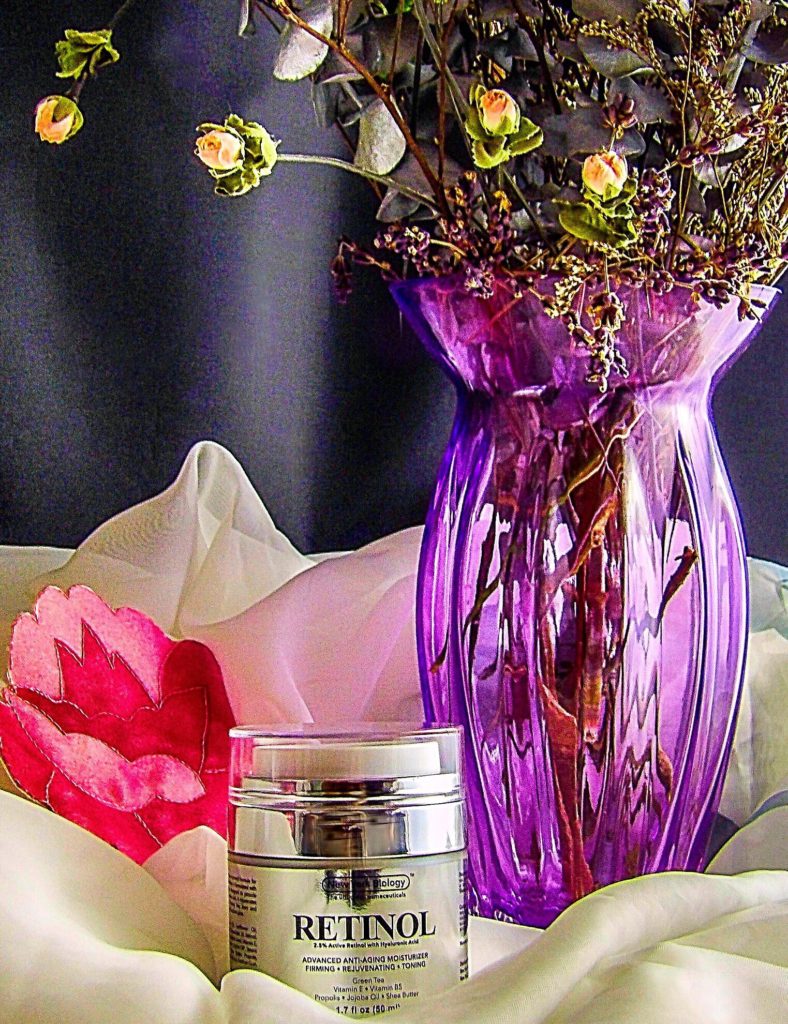WHY USE RETINOL?
Retinol is one of the best beauty product investments for skin. Regardless of your age or skin type, retinol can make skin look more attractive. In teens and the twenties, retinol can improve the quality and texture of skin and reduce acne breakouts. In the twenties and thirties, retinol can help build collagen structures to make skin stronger and make skin glow while simultaneously addressing occasional adult acne breakouts. As skin starts to age in the late thirties and beyond, retinol can combat wrinkles and fine lines, as well as retain that earmark of youth: it gives skin a healthy, natural glow and can eradicate dullness. Retinol is particularly useful around the eyes to reduce the appearance of dark circles and crows feet. It is also very helpful on wrinkles around the lips, forehead, throat, and decolletage.
Retinol is often expensive in its’ prescription Retin-A and Renova forms, but excellent results are obtainable in commercial preparations of retinol from reputable skincare companies. One company we have come to know and trust is New York Biology. So far, I have like every product I have tried from their line, and their Retinol Cream is no exception. It is useful, gentle, moisturizing, and full of quality ingredients in a generously sized container.
ABOUT NEW YORK BIOLOGY RETINOL CREAM
New York Biology Retinol Cream Moisturizer with Hyaluronic Acid is a gentle 2.5% Retinol cream that is suitable for sensitive skin due to its’ hydrating base and lack of harsh, artificial chemical ingredients. This Retinol cream includes some very effective anti-aging ingredients that are typically in far more expensive skincare creams. It also has several conditioning agent ingredients that leave skin smooth and soft. This is a big selling point to me for the New York Biology Retinol Cream because many retinol creams leave skin dry, itchy, red and flaking. Many users find this so irritating that they discontinue using retinol altogether. But New York Biology Retinol Cream leaves skin hydrated and smooth; it is gentle enough for daily or twice a day use. Another thing I like about New York Biology Retinol Cream is it is a VERY generous sized container for the price: 1.7 ounces! A prescription cost of a retinol tube that size or smaller would easily be $150-$200.

New York Biology Retinol Cream
SUPPORTING INGREDIENTS
There are lots of retinol products available, so the supporting ingredients make or break a Retinol for me. The New York Biology Retinol Cream has some quality ingredients worth considering, especially for those with sensitive skin.
This retinol contains Hyaluronic Acid, which hydrates the skin by holding a fair amount of water in the skin. This results in not only a dewy and supple look to the skin, but it plumps up wrinkles and diminishes their appearance. Hyaluronic Acid also helps active ingredients penetrate deeper into the skin, which means the Retinol can work on deep skin layers, effecting a better result on more collagen production and accelerated lightening of hyperpigmentation.
There are also a few ingredients that are most often found in high-end, expensive products. These include Propolis and Cassia Angustifolia.
Cassia Angustifolia Seed is a skin conditioning agent with high polysaccharide content called Galactomannan. In lab studies, Galactomannan mimics hyaluronic acid. It also has reparative capabilities to provide long-lasting suppleness and moisture on the surface of the skin, which gives a dewy look. While Hyaluronic Acid pulls moisture deep into the skin to plump, Cassia Angustifolia Seed retains water on the skin surface for a very dewy look. It also functions as an anti-inflammatory treatment for acne.
Propolis is a product made by bees. It has an anti-viral and anti-microbial action that benefits acne prone skin and protects skin exposed to environmental pollution. It forms a barrier on the skin that serves as a nourishing layer of antioxidants and vitamins. Propolis is one of the chief ingredients in this retinol cream that enables the ability to slather retinol on sensitive areas like under eyes and throat up to twice a day without irritation.
Finally, the supporting nourishing moisturizers include Aloe Vera, Sunflower Oil, Shea Butter, Green Tea and Jojoba Oil. Each of these nourishes the skin and keep it supple. They provide a soothing buffer to help the skin tolerate the retinol without getting red, itchy, inflamed or flaky.
APPLICATION:
It is simple to apply the cream: one pump of the container top should cover your face, two to three pumps if you are doing your throat and decolletage. I use any leftover I have to the top of my hands, focusing on my knuckles and cuticles and my hands appear much younger. It is not wet or sticky after application; you can apply an eye cream immediately if desired. There is already moisturizers in this Retinol cream, so unless you live in a very arid climate, you do not need to add a moisturizer atop your Retinol, as is the case with some Retinol creams. I that this Retinol contains a moisturizer because it is less effort at night to use it compared to some Retinols. I like the design of the top; it keeps my fingers out of the product itself which makes it more sanitary.

New York Biology Retinol Cream
MY RETINOL REGIMEN
I like doing a Vitamin C serum during the day and a Retinol cream at night to maximize my anti-aging program. This combo increases my collagen production, lightens my dark spots and hyperpigmentation, reduces fine wrinkles. I have sensitive skin, so I like that the New York Biology Retinol Cream contains such gentle and natural ingredients, that way I don’t have to skip a night of use due to dryness or irritation on my skin. I like that this Retinol is effective, and my skin is clearer after use, yet I can use it every night without any dryness, irritation, flaky skin or redness.
Upon initial use, I did have some very light peeling, but it was not red, dry or flaky and easily exfoliated smooth and clear with a washcloth, glycolic face wash, or Clarisonic facial brush. This is normal, especially if you are new to retinol.
HOW OFTEN SHOULD RETINOLS BE USED?
It depends on your skin care needs. Some people use them twice a day; some people only once.
Our advice is if you are under 30, twice a day Retinol is great if your skin can tolerate it. It addresses acne, lightens acne scars, reduces pores, and builds collagen reserves. And blackheads just seem to want to flee off your face they purge so fast with twice a day Retinol use.
But if you are over 30, consider a Vitamin C during the day and Retinol at night program. This way, you maximize your anti-aging benefits while still addressing the occasional pimple and wrinkle that manage to crop up at the same time. As a side note, even on once a day, I notice blackheads purging with this Retinol; it just took a little longer.
If your skin is sensitive or you are new to Retinols, for the first 30 days, only use it once a day or apply it every other day until you find what works for you.

New York Biology Retinol Cream
RESULTS:
I have been using New York Biology Retinol Cream on my face, eye area including crows feet and under eye bags, throat, and decolletage, as well as on my hands. Being able to use a Retinol every night is a real boon in my skin care regimen, so having a Retinol suitable for sensitive skin gives me faster results to having clear, smooth, radiant skin.
I’d recommend New York Biology Retinol Cream as a solid retinol product for those who have used retinol for years as well as for those with sensitive skin that may not have been able to tolerate other retinoids in the past. It is also an excellent price point if you are just starting out using retinol creams and want to give one a try to see what all the hype is about for yourself. If you use expensive prescription Retinol such as Renova or Retin-A which are not covered by insurance, you may want to give New York Biology Retinol Cream a try as the results are, in our opinion, comparable.
Purchase it here.

New York Biology Retinol Cream
I received this item for testing and review purposes. If you have any questions about my experience with it, leave it in the comments section below, and I’ll do my best to answer it!
Leave a Reply